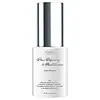What's inside
What's inside
 Key Ingredients
Key Ingredients

 Benefits
Benefits

 Concerns
Concerns

 Ingredients Side-by-side
Ingredients Side-by-side

Propanediol
SolventSalicylic Acid
MaskingZinc PCA
HumectantCentella Asiatica Root Extract
Skin ConditioningHydroxyethylcellulose
Emulsion StabilisingPhenoxyethanol
PreservativeLaminaria Digitata Extract
Skin ProtectingSaccharomyces Lysate Extract
HumectantChlorella Vulgaris Extract
Skin ConditioningSaccharide Isomerate
HumectantLactobacillus Ferment Lysate Extract
Skin ProtectingAllantoin
Skin ConditioningSodium Hyaluronate
HumectantWater
Skin ConditioningGlycerin
HumectantCentella Asiatica Extract
CleansingArctostaphylos Uva-Ursi Leaf Extract
Skin ConditioningNiacinamide
SmoothingSaccharide Isomerate
HumectantPanthenol
Skin ConditioningMelaleuca Alternifolia Leaf Oil
AntioxidantSalicylic Acid
MaskingPhenoxyethanol
PreservativeSodium Hyaluronate
HumectantCitric Acid
BufferingHypochlorous Acid
AntiseborrhoeicCitrus Limon Peel Extract
EmollientLactic Acid
BufferingMalic Acid
BufferingPropylene Glycol
HumectantSolanum Lycopersicum Fruit Extract
AntioxidantVaccinium Myrtillus Leaf Extract
AstringentEthylhexylglycerin
Skin ConditioningWater, Glycerin, Centella Asiatica Extract, Arctostaphylos Uva-Ursi Leaf Extract, Niacinamide, Saccharide Isomerate, Panthenol, Melaleuca Alternifolia Leaf Oil, Salicylic Acid, Phenoxyethanol, Sodium Hyaluronate, Citric Acid, Hypochlorous Acid, Citrus Limon Peel Extract, Lactic Acid, Malic Acid, Propylene Glycol, Solanum Lycopersicum Fruit Extract, Vaccinium Myrtillus Leaf Extract, Ethylhexylglycerin
Ingredients Explained
These ingredients are found in both products.
Ingredients higher up in an ingredient list are typically present in a larger amount.
Phenoxyethanol is a preservative that has germicide, antimicrobial, and aromatic properties. Studies show that phenoxyethanol can prevent microbial growth. By itself, it has a scent that is similar to that of a rose.
It's often used in formulations along with Caprylyl Glycol to preserve the shelf life of products.
Saccharide Isomerate comes from sugars found in corn. It is a skin hydrator.
The structure of this ingredient can be altered to be more similar to the carbohydrates found in our skin. This ability to mimic our skin gives it hydrating properties.
Specifically, saccharide Isomerate is a humectant. Humectants draw moisture from the air to our skin.
Research shows Saccharide Isomerate to be an effective moisturizer.
Learn more about Saccharide IsomerateSalicylic Acid (also known as beta hydroxy acid or BHA) is a well-known ingredient for treating skin that struggles with acne and clogged pores. It exfoliates both the skin's surface and deep within the pores to help clear out buildup, control oil, and reduce inflammation.
Unlike AHAs (alpha hydroxy acids), salicylic acid is oil-soluble. This allows it to penetrate into pores which makes it especially effective for treating blackheads and preventing future breakouts.
Salicylic acid is also known for its soothing properties. It has a similar structure to aspirin and can calm inflamed or irritated skin, making it a good option for acne-prone skin that is also sensitive.
Concentrations of 0.5-2% are recognized by the U.S. FDA as an over-the-counter topical acne product.
It can cause irritation and/or dryness if one's skin already has a compromised moisture barrier, so it's best to focus on repairing that before introducing this ingredient into your routine.
While salicylic acid does not increase sun sensitivity, it’s still important to wear sunscreen daily to protect your skin.
If you are looking for the ingredient called BHA or Butylated Hydroxyanisole, click here.
Learn more about Salicylic AcidSodium Hyaluronate is hyaluronic acid's salt form. It is commonly derived from the sodium salt of hyaluronic acid.
Like hyaluronic acid, it is great at holding water and acts as a humectant. This makes it a great skin hydrating ingredient.
Sodium Hyaluronate is naturally occurring in our bodies and is mostly found in eye fluid and joints.
These are some other common types of Hyaluronic Acid:
Learn more about Sodium Hyaluronate